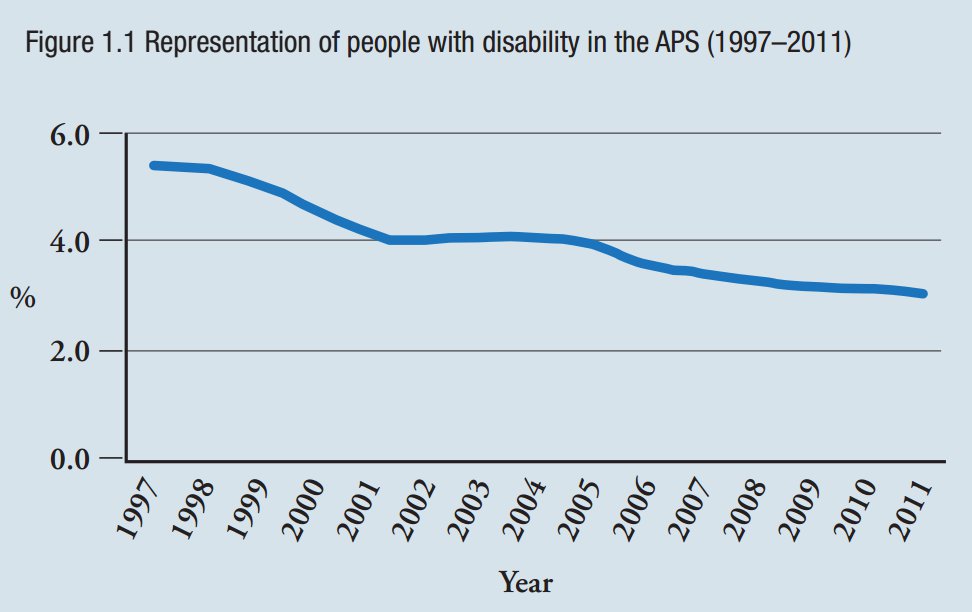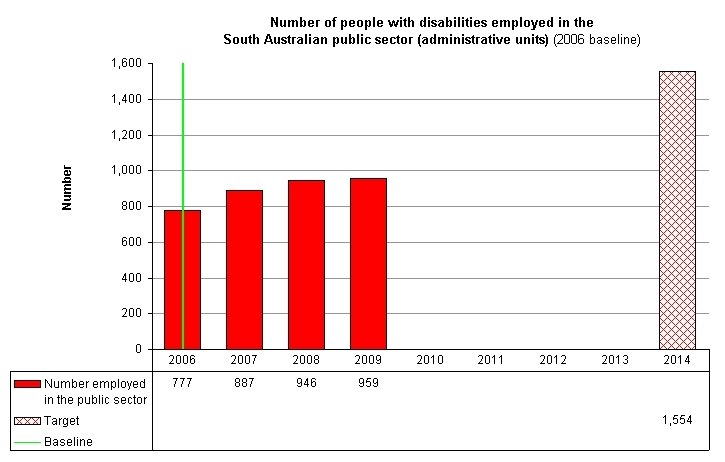“Shameful”: Govt fails on jobs for disabled


Dignity for Disability MLC Kelly Vincent says the government’s efforts to employ people with disabilities have been “disgracefully inadequate”.
The State Government employs the lowest proportion of people with disabilities in the country and has failed to meet its own targets, latest figures show.
Just 1.24 per cent of the state’s public service identified as having a disability in 2014, the lowest of any state or territory bureaucracy*.
By comparison, more than 20 per cent of South Australians identify as having a disability – the highest proportion of people with a disability in the country bar Tasmania.
The South Australian government had aimed to employ nearly 1,600 people identifying as having a disability in the public sector by 2014, but only 1,277 were employed that year.
That’s the same number as were employed in 2010, with the figure fluctuating slightly during the intervening years.
Dignity for Disability MLC Kelly Vincent told InDaily the government’s efforts to employ people with disabilities had been “disgracefully inadequate”.
She indicated support for a limited quota system for the employment of people with disabilities and said executive staff in the public service should have the key performance indicators on their job descriptions modified to include the employment of people with disabilities.
“If there is a legislative requirement to employ people with disabilities which, in turn, makes workplaces accessible from the get-go, we could probably eventually do away with them again,” she said.
“Governments on all levels need to step up and promote the benefits of employing people with disability.”
The number of people with disabilities employed in government bureaucracies around the country has been in decline since 1997.

Employment of people with disabilities has been in national decline since 1997, according to the Australian Public Service Commission.
The employment rate among people with disabilities in Australia is just under 40 per cent.
And 45 per cent of people with disabilities in Australia live at or below the poverty line (page 11).
Commissioner for Public Sector Employment Erma Ranieri defended the state figures, saying there would be a “high number” of people in the South Australian bureaucracy with undeclared disabilities.
“Our public sector is a model employer and is committed to employing people with a disability,” Ranieri said.
“The statistics in this case do not tell the whole story.
“All jurisdictions have different measurements so it is difficult to compare South Australia to other states.
“The numbers rely entirely on employees declaring their disability.
“I expect a spike in the number of employees with declared disability in 2015, and hope to continue to improve this number in future.”
Ranieri said that she ran a State Government program which aimed to bring young people into the public sector as trainees and that six out of the 183 trainees employees had a declared disability.
Chief Executive Officer of Disability Advocacy Network Australia Mary Mallett said the South Australian government’s record on employing people with disabilities was “shameful”.
“It’s only through people with disability having jobs and earning real wages that they can actually improve their lives,” Mallett said.
“The public sector should be an example to other businesses.
“At the moment they’re being a very bad example.”

The State Government’s employment figures for people with disabilities in the public sector, and its 2014 target. Updated employment figures were 1,277 (2010), 1,258 (2011), 1,270 (2012), 1,323 (2013), 1,277 (2014).
South Australian Equal Opportunity Commissioner Anne Gale said the public service had an opportunity to lead by example by employing more people with a disability.
“We’ve got some work to do,” she said.
“We do want to see more people with disabilities in the workforce.
“I don’t think it’s high enough, that’s for sure.”
Gale said adding the employment of people with disabilities to department chiefs’ KPIs was a good idea.
“I think measuring what people do is absolutely essential,” she said.
“You do have to set some measures.”
Employment discrimination on the basis of disability is the most frequent complaint to the Equal Opportunity Commission.
Gale led one of the State Government’s so-called “90-day projects”, which aimed to increase the number of people with a disability employed in the public service.
“The project was an opportunity to feature and put a spotlight on the employment of people with a disability in the public sector,” Gale said.
As a result of the program, she said, “we have four in employment and four still in the process of designing the job and matching the (jobseekers) for the jobs”.
“You can’t do everything in 90 days, but in those 90 days we achieved commitment to employing four people.”
Vincent told InDaily the main barriers to employment for people with disabilities were about the attitude of employers.
“I hear stories – and have been in them myself – about people attending a job interview in a wheelchair, for example, only to be asked questions not about their skills or qualifications, but about things like whether they can fit under a desk.”
“Research shows that, among other benefits, we are more loyal employees and take fewer sick days than non-disabled people.
“It’s very clear that the main barriers are attitudinal.”
*Statistics on other state and territory bureaucracies were taken from the Australian Public Service Employment Strategy and relate to the years 2009 and later.




